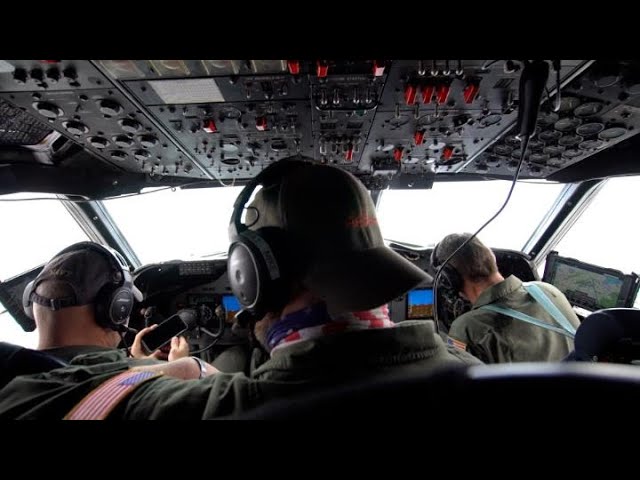Cloud Physics
Aerosols within the atmosphere nucleate water droplets and ice crystal formation, which is the microphysical start of clouds. Such clouds are visible due to the collection of water droplets or ice particles that form them. Cloud physics is the study of the physical processes that cause clouds to develop, grow, and precipitate.
UND Faculty Researchers: David Delene, Marwa Majdi, Shawn Wagner, Daile Zhang
Comparison Between In-situ and Polarimetric Radar Hail Observations in Convective Storms
A unique set of airborne in-situ observations of hail was obtained by the NSF-supported armored T-28 research aircraft operated by the South Dakota School of Mines and Technology. The T-28 aircraft was capable of operating in convective storms producing hail and obtained hail number concentrations and size distributions, as well as 2-D shadow images. Concurrently with aircraft observations there were S-band dual-polarimetric radar observations. The objective is to document the in-situ hail observations with the polarimetric radar signatures and use the aircraft hail observations to compute expected polarimetric radar signatures and compare them to actual radar signatures observed from the same storm volume. Varying the approximations and parameters used in the calculations and comparing the calculated to the actual radar returns will provide insight into how hail shapes, orientation, sizes and concentrations influence radar signatures. The key aspect of this proposal is the comprehensive analysis of a large volume of airborne in-situ hail data from 18 missions conducted during 9 different campaigns that have not been analyzed so far.
Contact: David Delene
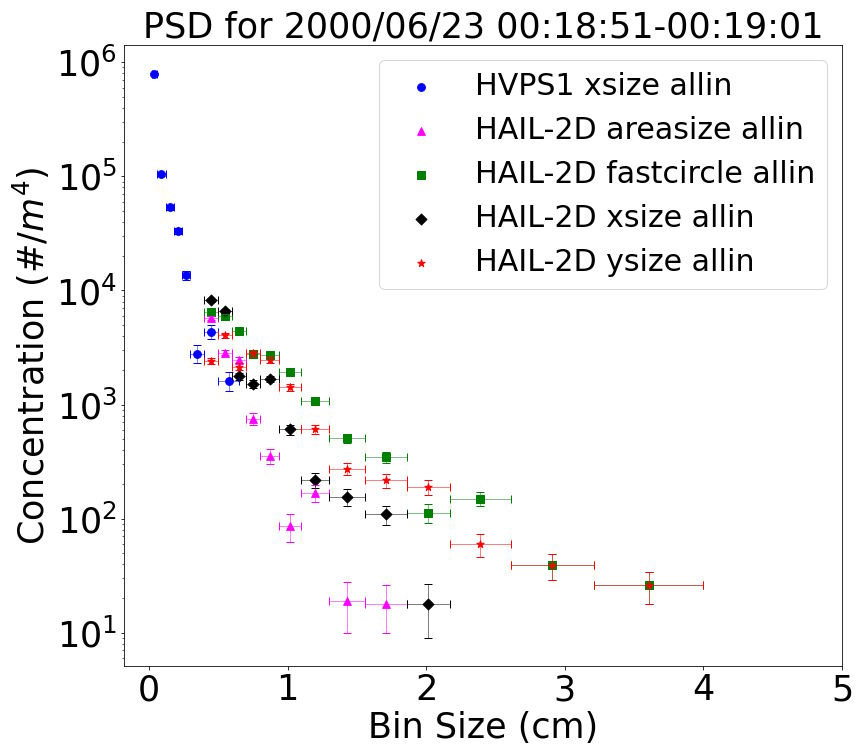
Plot of the particle size distribution where there is a decrease in concentration observed in the five smallest HVPS channels that matches the decrease seen in the corresponding Hail Spectrometer channels. The different sizing methods highlight uncertainty in maximum particle size and concentration. The xsize allin is the preferred processing method since it is reliable, simple, and is consistent with the sizing method used in earlier data.
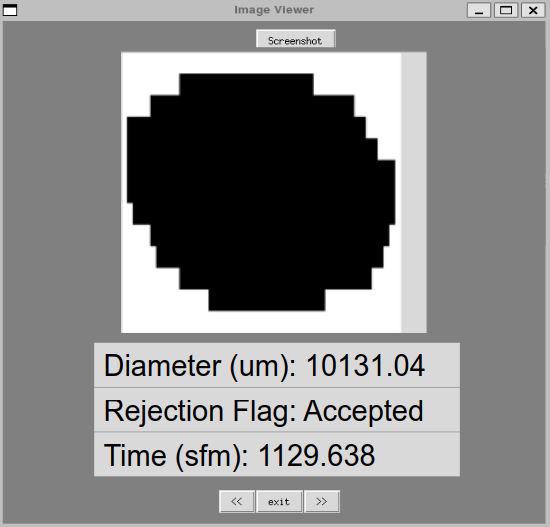
Example of individual particle viewer developed to quickly visualize images with data attributes. The System for OAP Data Analysis (SODA) software packages generates individual particle images that are matched with their respective characteristics.
IMPACTS (Investigation of Microphysics and Precipitation for Atlantic Coast-Threatening Snowstorms)
Winter snowstorms on the eastern seaboard cause major disruptions to transportation, commerce, and public safety. Snowfall is frequently organized in banded structures in winter storms, which is poorly understood and predicted by models. The ability of remote sensing technologies and numerical weather prediction models have advanced significantly which enables obtaining observations that identify key processes and improves remote sensing methods and weather forecasting. The University of North Dakota is responsible for the acquisition and processing of data from the cloud microphysics probes, which are mounted on the NASA P-3 aircraft (Cloud Droplete Probe, King Probe, Water Content Measurement Probe, Rosemount Icing Probes, 2D-S Probes, HVPS3 Probes, and Hawkeye probe). The integration of these probes required technical work for establishing power and data connections, mounting of the probes on the under-wing pylons, buildup of the cabin instrument racks, and verifying operation of all instruments. Software is used to ensure proper instrument function once installed and to handle the P-3 data streams. The UND team has operated the probes during the IMPACTS field campaigns, which includes cleaning, maintenance, conducting quality control checks, and troubleshooting the instruments. UND is responsible for delivering Level 2 data products to the project archive and conducts analysis of the cloud probe data in collaboration with other IMPACTS investigators.
Contact: David Delene
News Articles
- UND research on hypersonic vehicles picks up speed
- UND to team with Purdue University to study impact of ice crystals on hypersonic travel
- Scientists are flying into snowstorms to explore winter weather mysteries
Media
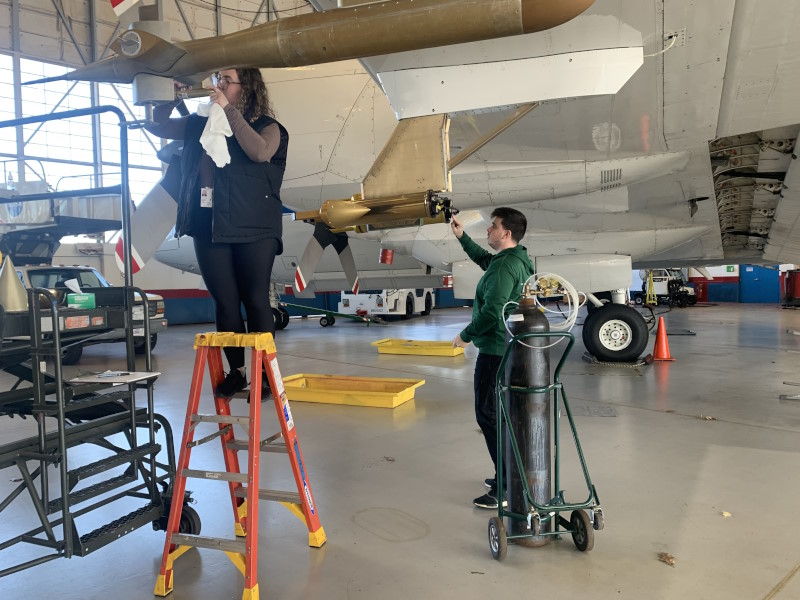
Graduate students Christian Nairy and Jennifer Moore have been operating the cloud probes on the NASA P-3 research aircraft throughout the two month-long, 2023 IMPACTS field project. Image shows them cleaning cloud probes that are mounted on the aircraft.
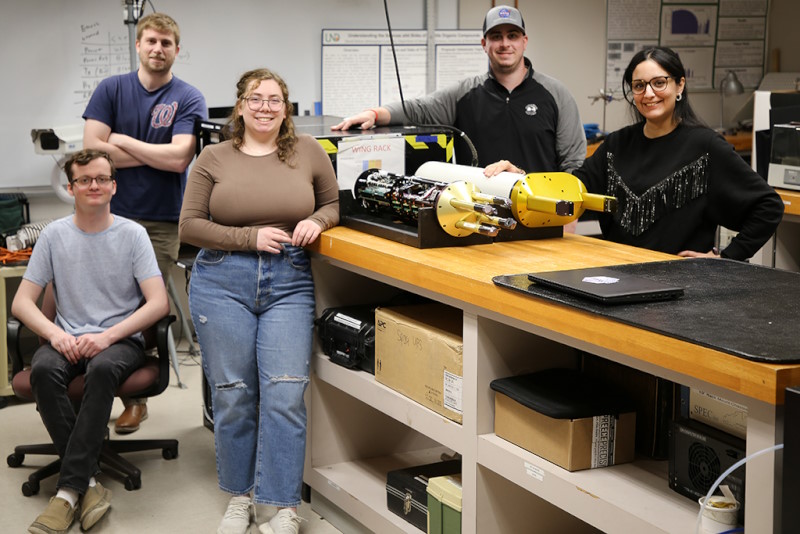
From left, undergrad student Nicholas Camp, graduate students Michael Willette, Jennifer Moore, and Christian Nairy, and Postdoctoral Fellow Marwa Majdi stand with equipment used to collect weather data for the NASA IMPACTS program. The team worked with Dr. David Delene in collecting and processing data for the project.
Unveiling Ice Crystal Chain Aggregates in Winter Storms: Contextualization using In-situ and Remote-sensing Observations
The project's aim is to advance the understanding of the aggregate formation process by creating a storm relative location map of chain aggregates. The project uses the cloud probe, in-situ measurements (CPI, PHIPS, 2D-S, and HVPS3 probes) on the P-3 aircraft to determine the amount of chain and non-chain aggregates observed. Remote sensing observations (CPL, CRS, EXRAD, ground radar, and GOES 16) are used to put the location into the larger context of the winter storm. By utilizing the complete IMPACT field project dataset, a storm relative map of chain aggregates is developed. The chain aggregate location map enables conceptual testing of different possible formation processes.
Contact: David Delene
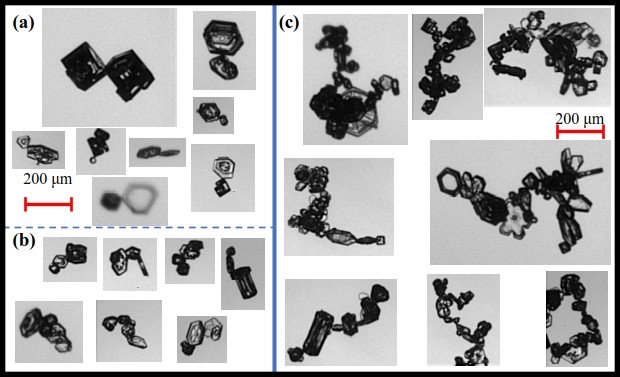
(a and b) PHIPS images of chain aggregates comprised of ice crystals found in Florida cirrus anvil clouds produced by summertime convection observed during the CapeEx19 field campaign. (c) CPI images of chain aggregates found near convective band associated with wintertime convection off the New England coast.
